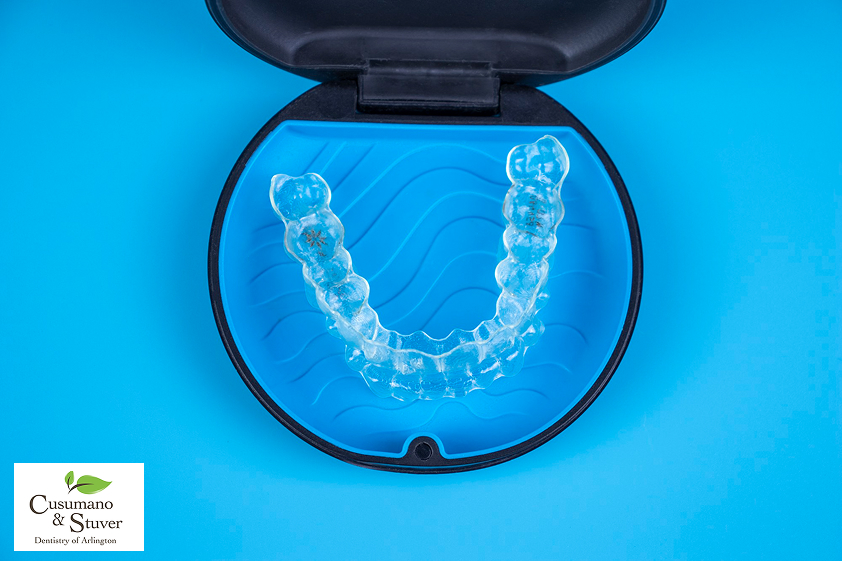Invisalign® has transformed modern dentistry by addressing functional dental issues that impact overall health beyond simple aesthetic concerns. As clear aligner technology has evolved, dentists offering Invisalign® in Arlington, VA, can now effectively treat complex conditions like malocclusions, crowding, TMJ disorders, and periodontal issues with a discreet, removable system that patients prefer.

The Evolution of Invisalign® Technology
Invisalign® transformed orthodontic treatment when it launched in 1999, creating the first mainstream clear aligner system. Founded after Zia Chishti’s experience as an adult braces patient, the initial technology could only address minor cosmetic issues with basic plastic materials and limited tooth-moving capabilities.
The system’s true evolution began after treating over a million patients by 2010, when Align Technology leveraged this vast clinical data to develop breakthrough innovations. The 2013 introduction of SmartTrack material—a proprietary multilayer polyurethane plastic—was revolutionary, delivering 75% more predictable tooth movement with gentler, more consistent force application and improved patient comfort.
Complementing this advancement, SmartForce features introduced precision-engineered attachments that function as leverage points for complex movements. These tooth-colored attachments, along with power ridges and precision cuts, enable the system to achieve difficult tooth rotations, root movements, and bite corrections previously impossible with aligners.
These technological innovations transformed Invisalign® from a cosmetic solution into a comprehensive orthodontic system capable of treating severe malocclusions, open bites, crossbites, and significant functional issues.
For younger patients, Invisalign® Teen with mandibular advancement features even addresses jaw growth while aligning teeth.
Integration with digital dentistry further enhanced capabilities, as iTero scanners and ClinCheck software enabled precise treatment planning with virtual outcome simulation. Recent clinical research confirms success rates comparable to traditional orthodontics for complex cases when treatment is performed by experienced clinicians.
Through this technological evolution, Invisalign® has progressed from addressing simple cosmetic concerns to effectively treating the complex functional dental issues that significantly impact overall oral health.

Complex Dental Issues Invisalign® Can Effectively Treat
While Invisalign® is well-known for creating beautiful smiles, its advanced technology now effectively addresses serious functional dental problems that impact overall health. The following conditions demonstrate how Invisalign® has evolved beyond cosmetic applications to become a comprehensive treatment option for complex dental issues.
Malocclusion Correction
While Invisalign® has shown effectiveness in treating mild to moderate malocclusions, its efficacy in addressing severe cases, especially those requiring significant occlusal corrections, is limited.
A 2018 systematic review concluded that Invisalign® is a viable alternative to conventional orthodontic therapy for mild to moderate malocclusions in non-growing patients that do not require extraction. However, it identified limited efficacy in arch expansion through bodily tooth movement, extraction space closure, corrections of occlusal contacts, and larger anteroposteriorly and vertical discrepancies.
Crowding and Spacing Issues
Severe dental crowding creates difficult-to-clean spaces where bacteria thrive, increasing risks of decay, gingival inflammation, and abnormal tooth wear. Invisalign® addresses crowding through controlled expansion and precise interproximal reduction when necessary while effectively closing gaps for patients with spacing issues through predictable tooth movement.
Complex crowding cases typically require 18-24 months of treatment—comparable to traditional orthodontics but with superior hygiene access throughout.
TMJ Disorders and Jaw Alignment
The temporomandibular joint functions optimally when teeth meet in proper alignment, while malocclusions force this joint into unnatural positions, causing muscle tension, joint sounds, and referred pain. Invisalign® addresses the dental component of TMJ disorders by gradually establishing proper occlusion, allowing the jaw to function in a more natural position with improved biomechanical harmony.
Patients often report significant quality-of-life improvements, including reduced headaches, improved sleep, enhanced chewing function, and decreased muscle fatigue.
When incorporated into a comprehensive treatment approach, Invisalign® provides a long-term solution addressing the underlying occlusal factors contributing to TMJ dysfunction.
Managing Periodontal Health
Misaligned teeth create challenges for effective plaque removal, leading to bacterial accumulation, traumatic occlusion, and potential gingival recession. Unlike fixed appliances, Invisalign® aligners are removed for cleaning, allowing thorough biofilm removal throughout treatment—particularly valuable for patients with a periodontal disease history.
A study from Thieme Connect indicates that patients using clear aligners maintain significantly better gingival health during orthodontic treatment with lower plaque indices and reduced inflammation. The long-term benefits of Invisalign® include more evenly distributed occlusal forces and easier maintenance with normal home care, supporting ongoing periodontal stability even for patients with previously compromised periodontal health.
The Invisalign® Treatment Process for Complex Cases
Treating complex dental issues with Invisalign® requires a sophisticated clinical approach far beyond that needed for simple cosmetic cases. The process combines advanced technology with personalized treatment strategies to address functional concerns while achieving aesthetic improvements.
1. Comprehensive Assessment and Digital Planning
The journey begins with detailed digital scanning using the iTero intraoral scanner, which captures thousands of images to create a precise 3D model of the patient’s dentition accurate to within 10 microns. This digital impression feeds directly into Align Technology’s proprietary ClinCheck software, allowing the clinician to visualize the entire treatment from the initial position to the final outcome.
For complex cases, this diagnostic precision is critical—enabling clinicians to identify potential challenges, plan precise tooth movements, and communicate expected outcomes with patients through vivid visualizations that show each stage of treatment.
2. Customized Treatment Protocols
Complex cases demand customized protocols that differ significantly from cosmetic-focused treatments. While simple alignment might require only 10-15 aligners, complex functional corrections often necessitate 40+ aligners with strategically placed SmartForce attachments that serve as leverage points for difficult tooth movements.
Elastics are frequently incorporated to address bite discrepancies, with precision cuts in the aligners accommodating these additional force elements.
Treatment timelines for complex cases typically range from 18-24 months compared to 6-9 months for cosmetic cases, with more frequent monitoring appointments to ensure progress aligns with the digital treatment plan.
3. Integration with Other Dental Treatments
Invisalign’s® flexibility makes it ideal for integration with comprehensive dental rehabilitation. Treatment sequencing often positions alignment before restorative work to establish proper spacing for implants, bridges, or crowns while ensuring ideal occlusal relationships.
Many complex cases benefit from interdisciplinary approaches, with periodontists addressing gingival issues concurrent with alignment or oral surgeons providing adjunctive procedures when needed.
The removable nature of aligners proves particularly advantageous for pre-prosthetic tooth movement, allowing the creation of optimal spacing and angulation for subsequent restorations without interference from fixed appliances that would complicate impressions and temporization.
Transforming Dental Health Through Technology
Invisalign® has evolved from a cosmetic solution to a comprehensive treatment system for complex dental issues affecting overall health and quality of life. Advanced materials, precision attachments, and digital planning capabilities now enable the predictable correction of malocclusions, crowding, TMJ disorders, and periodontal concerns with greater patient comfort and hygiene access.
As the technology continues to advance, Invisalign® remains at the forefront of modern orthodontics, offering both functional improvement and aesthetic benefits for patients seeking alternatives to traditional treatment approaches.


